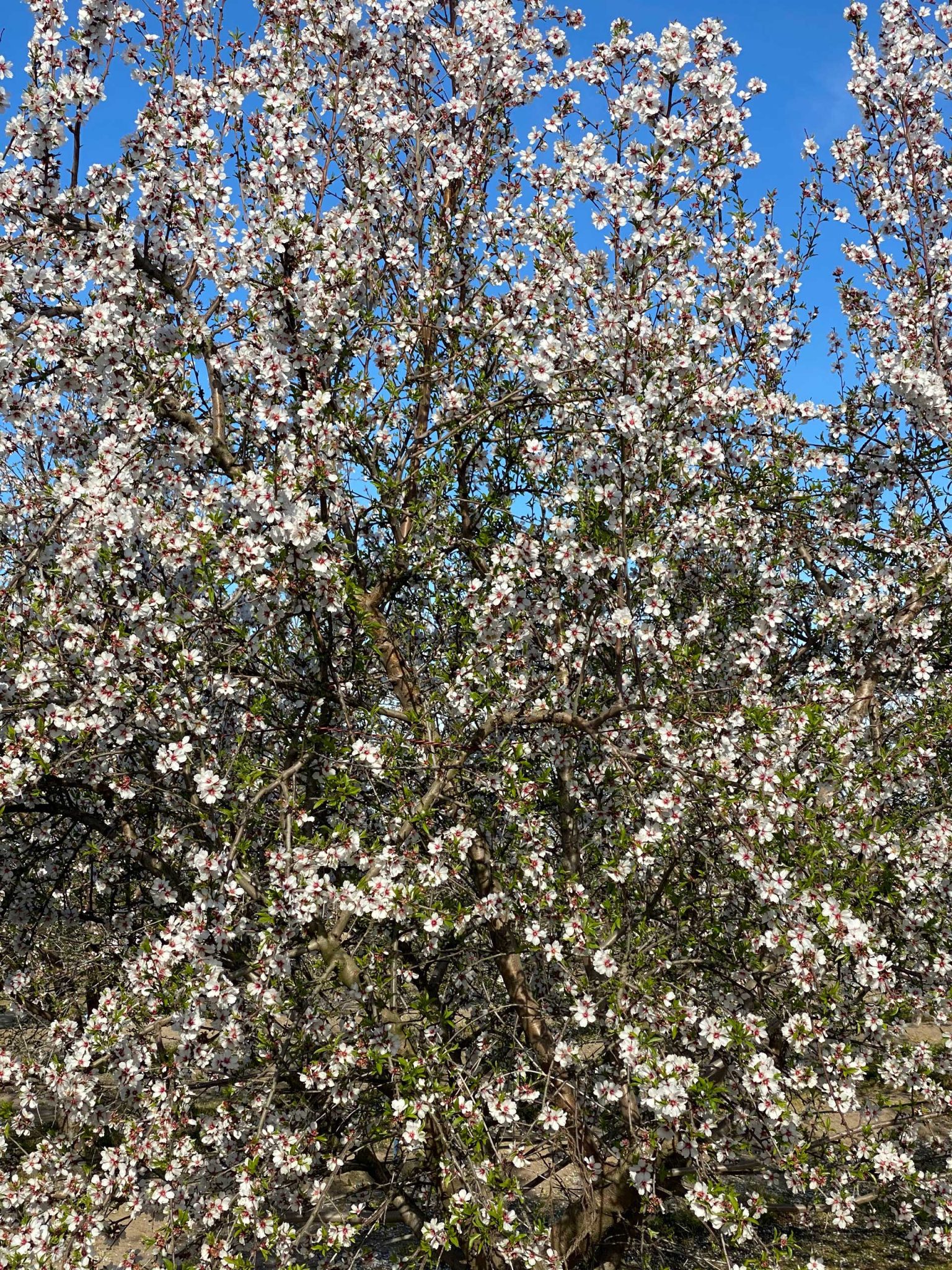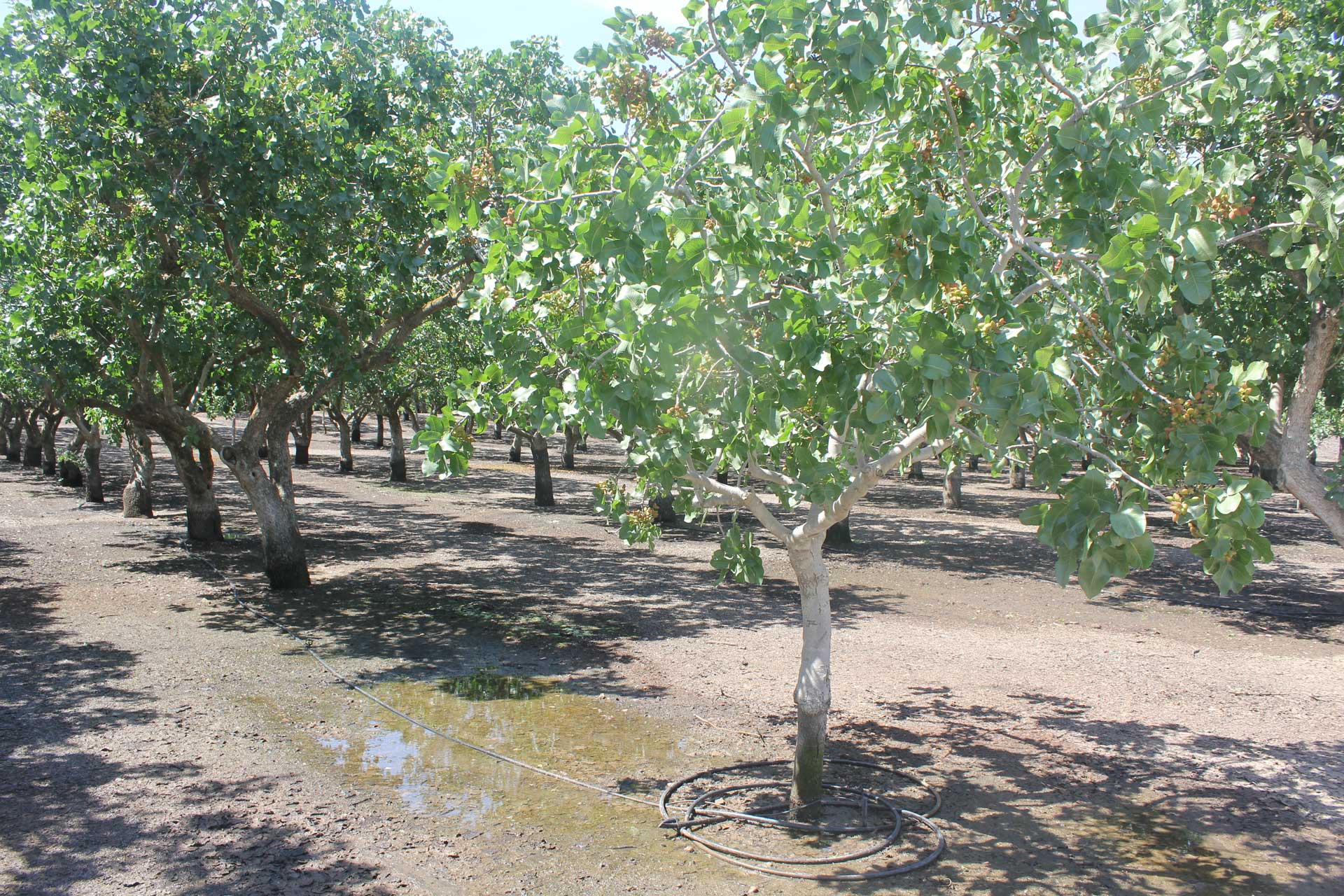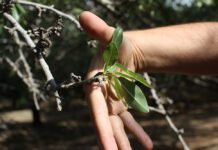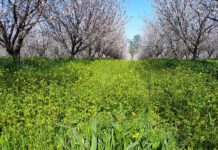
Fertilizer prices are awful, water is expensive if you can get it and prices are down. The perfect storm is hitting us farmers. When you need a raincoat (if it would rain again), a lecture on weather does you no good to help immediately. So, let’s get a little more practical with this article than theoretical. If our yields aren’t at the top of the chart, fertilizer is only expensive if it doesn’t work. Trying to save $100 per acre on inputs won’t “make” you as much money as increasing yield by 300 pounds an acre. So often we focus on cutting and not on improving. Let’s get better at getting nutrients into our crops. We should be able to increase yields and orchard health to make a bigger impact to the bottom line.
Smaller Shots
Smaller shots, the “spoon fed” approach, works if it’s still adequate. Think about trying to take a big bite of food with an oversized spoon filled to the max. Whatever you can’t fit in your mouth goes back into your plate and mixes with all the other food on it. You have to keep taking smaller bites. The food is there but not getting into your mouth quickly enough. Now if the waiter clears your plate before you’re done, you only got a fraction of the food that was on your plate. But you’ll still get the bill for that meal.
Relate that to nitrogen. We apply big slugs of nitrogen a few times a year. Three slugs of 50 units a piece in March, April and May will put 150 units of N into your soil. But if your trees can only take up ten units per week, what happens to the other 40 units? Nitrate leaches easily. The trees take in the available water in an irrigation set and then stop. As the water goes down, NO3 goes with it. The next time you kick on the water, more N should get taken up that may still be in the root zone, but more gets pushed down past those roots and is wasted. The majority of your feeder roots are in the top 12 inches of soil. We often see irrigations penetrate three feet of soil. Bye-bye N. The waiter took your plate, but you paid for it.
Now let’s take this to another level. Plants drink their food, they don’t eat it. So, the spoon we talk about in smaller feedings gets reduced. It’s now the size of a small straw. That can’t hold much food and it has to be solubilized. We are trying to get that nutrition in through those small holes. That takes a lot of energy. We need P to make it. We focus on N, but P makes it possible. And nitrate loves to attach to calcium and flow through the xylem. Potassium helps make all that happen in directing traffic. We need calcium as much as nitrogen, but we don’t typically apply enough in a plant-ready form to balance that out.

Balance Nutrition
Plan the rest of your season to balance your nutrition. If you are planning on 120 units of nitrogen, calculate that out. Now plan on doing at least that much soluble calcium. Try to get 20% of that N amount, or 24 units, in phosphorus. And get it in early; N and P start high in the spring. When leaf expansion happens, plan to get 10% of the N amounts into your trees in a soluble magnesium. This is the main element in the center of chlorophyll. Try to get 12 units. We want 80% (100 units) of the N as potassium and 25% of the N in sulfur.
As you start to do your math, you suddenly realize you have never put 12 units of magnesium on your field. But your tissues have shown you may be okay in those levels. If you have amended your soil with gypsum, let’s say two tons in a previous year, you added 920 pounds (units) of calcium to your soil.
Now, do your tissues show adequacy for calcium early in the season? Probably not. This tells us we need to look at our soils and the water we rinse it with to make supplemental calculations to what we are getting. Look at your meq/l in your soil nutrient reports. What is solubilizing in the water? That’s what the roots actually see in an irrigation, with a caveat.
Those soils in the lab are rinsed with a neutral pH deionized water. None of us are irrigating with that water. So, to keep this below the level of a brain overload, ask your CCA to help you make a plan. Reduce your supplemental inputs to levels that will get you sufficiency after calculating what the soil should give you in your irrigations. If there will be tie up, add those nutrients to a foliar spray (magnesium in particular.)
Monitor how far the water is moving in an irrigation set and tailor those irrigations where you are fertigating to keep the water in the top foot as long as possible. This may mean you have to split your irrigations up quite a bit to make that happen. Desperate times call for targeted measures. When prices are down, keep yields up. Doing it with a purposeful budget and precision farming can keep us profitable. Make sure your trees actually drink the nutrients you buy them.















